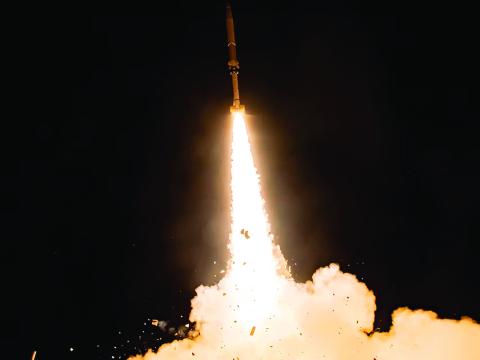NASA Launches Commercial Race for Space
With the end of the space shuttle program in sight, NASA is shifting its focus on orbital access to the private sector and building a commercial infrastructure.
With the end of the space shuttle program in sight, NASA is shifting its focus on orbital access to the private sector and building a commercial infrastructure. The new initiative will focus on providing entry for humans into low earth orbit, and NASA will look to industry for solutions.
In this month's issue of SIGNAL Magazine, Editor in Chief Robert K. Ackerman looks at NASA's push for a space transportation infrastructure in his article, "Commercial Manned Launch Services Awaken."
NASA hopes its new direction will accomplish two goals: establishing domestic manned orbital capabilities to reach the International Space Station and spurring commercial development of space utilization. Several companies already are planning space-based facilities for research and development as well as tourism, but the initiative requires many companies to enter a completely new frontier.
Rather than relying on the Constellation program and its Orion spacecraft for manned space access as originally planned by NASA, the Obama administration suggested turning to the commercial sector at the recommendation of the Review of U.S. Human Space flight Plans Committee. Now, NASA's role will be to establish standards and facilitate development while members of industry create and execute potential designs.
However, the program faces several challenges including unforeseen costs and the potential loss of lives if missions fail. In addition, Congress did not adopt the administration's recommendations unconditionally. Pushback from policymakers could force a compromise and keep Orion in the game as a player among the commercial options.
According to Edward J. Mango, director of NASA's Space Transportation Planning Office, the initiative has moved past the planning phase, and element designs should be matured over the next year or so through agreements with companies. Mango explains that the process should move more quickly than traditional acquisition, because the program has fewer requirements and gives companies design freedom without roadblocks from NASA. Mango says he hopes this approach leads to multiple solutions for the same requirements.
Several companies currently have plans in action to provide human access to orbit through smaller, less sophisticated versions of the shuttle or capsules like Orion and the lunar Apollo. Space Exploration Technologies (SpaceX) already launched and recovered an orbital spacecraft called Dragon, which can carry up to seven crew members or cargo in low earth orbit. Other companies in the mix include Orbital Sciences Corporation; Sierra Nevada Corporation's SpaceDev subsidiary; Virgin Galactic; Boeing Space Exploration; Bigelow Aerospace; and Lockheed Martin Space Systems.
NASA hopes to have multiple partners launching crews into space by 2016, and if all goes as planned, Mango believes "the next American-flagged vehicle to bring our astronauts into space is going to be through this commercial crew program."




Comments